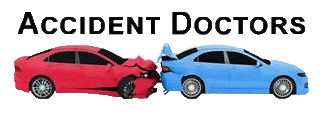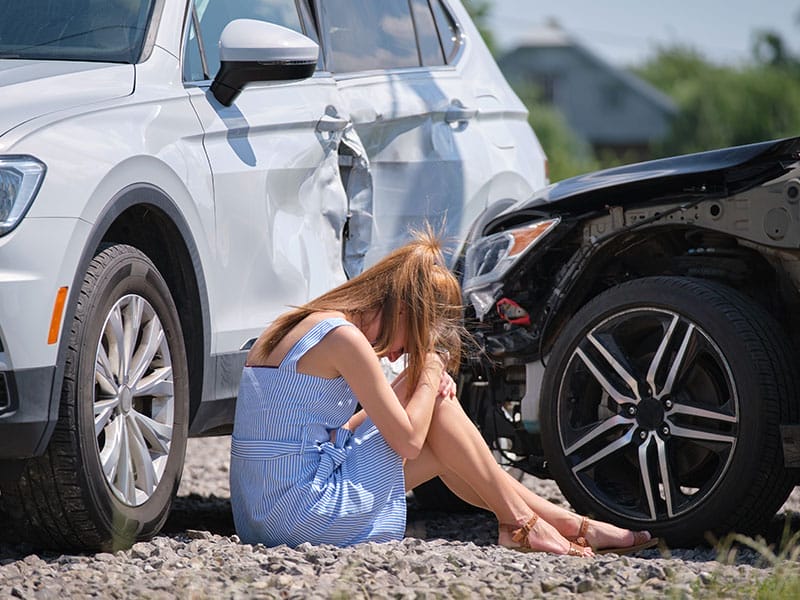Delayed Lower Back Pain After Car Accident
Back pain can be a distressing aftermath of a car accident, leaving many wondering how severe their injury might be and if they need medical attention.
It’s not uncommon to leave an auto collision feeling okay, only to be gripped by discomfort hours or days later.
This sudden emergence of pain can cause alarm and confusion about the best course of action.
Did you know that back injuries are among the most frequent consequences of car accidents?
The force from such incidents can harm your spine significantly, often leading to long-term discomfort.
Determining when to seek professional help is crucial for recovery.
This guide outlines key signs indicating it’s time to see a doctor for back pain after an accident, explores common injuries associated with these events, and examines effective treatment options for managing your symptoms.
Keep reading to understand how you can recognize serious issues early on and get on the right path toward healing.
Your well-being is our priority!
Please note: We are accident doctors who charge you $0 out of pocket for the best after car accident medical care.
You should come in and get treated by us first, and then let us refer you to the best auto accident attorneys in Phoenix or Mesa.
Key Takeaways
Immediate Warning Signs
Critical Symptoms Requiring Emergency Care:
- Severe or shooting back pain.
- Numbness or tingling in limbs.
- Loss of bladder/bowel control.
- Difficulty walking or standing.
Common Injury Types
Primary Back Injuries:
- Lumbar/thoracic vertebrae fractures.
- Herniated disks.
- Spondylolisthesis (vertebrae slippage).
- Facet joint injuries.
Treatment Options
Medical Interventions:
- Epidural steroid injections for nerve inflammation.
- Physical therapy for mobility and strength.
- Pain management medications.
- Heat/ice therapy.
Recovery Considerations
Long-term Management:
- Regular exercise tailored to condition.
- Consistent physical therapy participation.
- Proper documentation for insurance/legal purposes.
- Professional medical monitoring.
Prevention of Complications
Essential Actions:
- Seek immediate medical attention after accident.
- Document all symptoms thoroughly.
- Follow prescribed treatment plans.
- Monitor for delayed symptoms.
- Maintain consistent medical care.
Understanding Back Pain Post-Accident
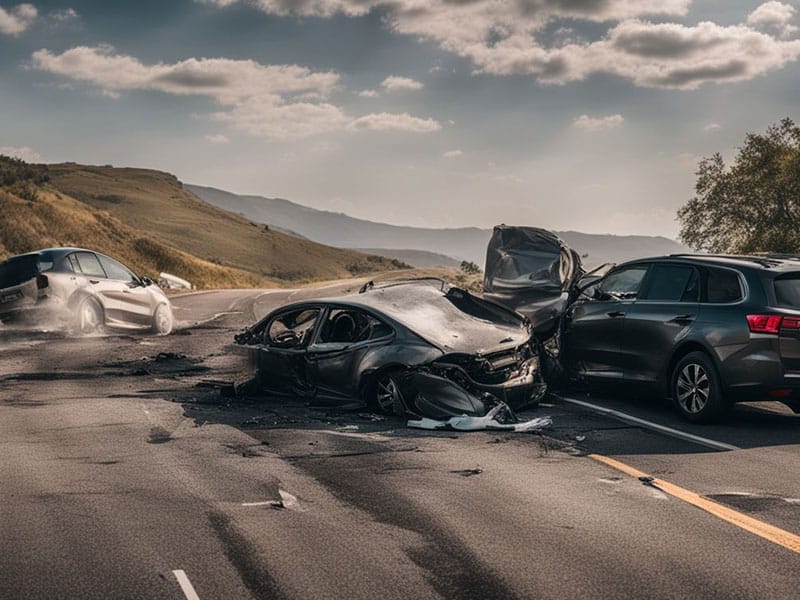
After a car accident, it’s common to experience lower back pain, which can range from mild discomfort to severe and debilitating.
This can be caused by factors such as muscle strains, spinal injuries, or herniated discs.
Understanding the symptoms and causes of back pain post-accident is crucial for seeking appropriate medical attention.
Common Symptoms of Lower Back Pain
People with lower back pain often experience a dull, aching discomfort that can range from mild to severe.
This may be constant or intermittent, generally intensifying with certain movements like bending or lifting.
Muscle spasms and stiffness in the surrounding area are also common, which might restrict your ability to move freely or maintain normal posture.
Other symptoms include shooting or stabbing sensations that radiate down one leg – this could indicate sciatica if it aligns with nerve pain pathways.
Some individuals feel tingling or numbness in their extremities, pointing towards potential nerve involvement.
Tenderness upon touch and difficulty standing up straight without pain are additional signs of lower back trouble that should not be ignored.
How Car Accidents Cause Back Pain
Experiencing back pain after a car accident is not uncommon, given the force involved when vehicles collide.
This sudden impact can jerk your body in unexpected directions, straining muscles and ligaments beyond their normal range.
Even with a seat belt securing you in place, the violent motion of an auto accident exerts intense pressure on your spine, which can result in serious back injuries.
The nature of these injuries often varies from minor sprains to severe cases like herniated disks or vertebrae fractures.
The soft tissue surrounding your spine absorbs much of this shock and can become damaged, leading to inflammation and chronic pain if not treated effectively.
Moreover, direct trauma to the spinal cord itself during accidents may cause swelling and bruising or even permanent spinal cord injuries that affect nerve function throughout the body.
Acting quickly by seeking appropriate medical attention is crucial for diagnosing potential internal damage that may not be immediately apparent but could lead to long-term discomfort or disability.
Common Types of Back Injuries From Car Accidents
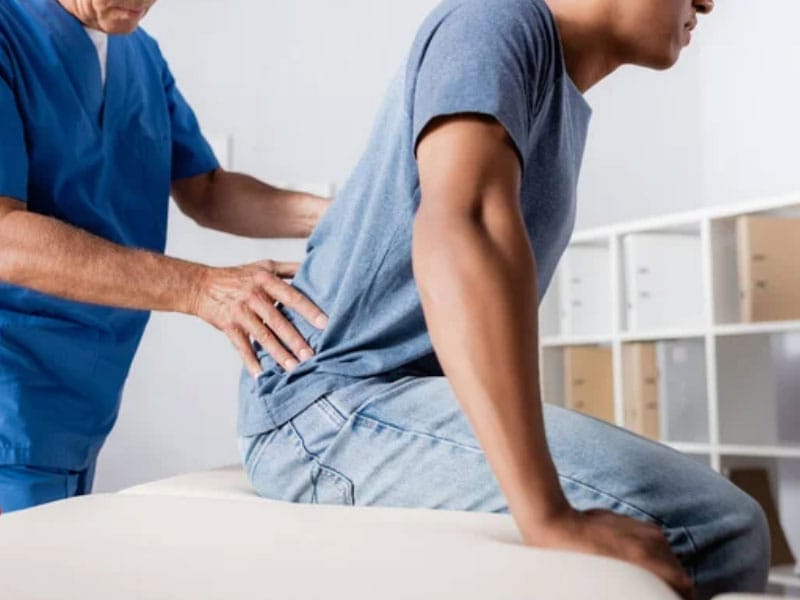
Car accidents can result in various types of back injuries, including fractures to the lumbar or thoracic vertebrae, herniated disks, spondylolisthesis, and facet joint injuries.
These injuries can cause intense pain and discomfort, often requiring medical attention and treatment to alleviate symptoms and promote healing.
Lumbar or Thoracic Vertebrae Fractures
Lumbar or thoracic vertebrae fractures can result from high-impact accidents and are serious injuries that affect the spine.
These types of fractures may cause significant pain, limit mobility, and even lead to more severe neurological issues if not treated promptly.
The lumbar region consists of the lower back vertebrae, which are responsible for supporting much of the body’s weight.
A fracture here can severely impact a person’s ability to perform daily activities.
Fractures in the thoracic area – the midsection of the spine nestled between the cervical (neck) spine and lumbar (lower back) spine – merit immediate attention as well.
This part of your backbone protects vital organs within your chest such as your heart and lungs.
Damage to this area might result not just in back pain but potentially also in breathing difficulties or other organ-related symptoms.
Accurate diagnosis often requires imaging tests like MRIs or CT scans, followed by treatments varying from wearing a back brace to undergoing surgery depending on severity and associated complications.
Herniated Disks
Herniated disks, also known as slipped or ruptured discs, occur when the soft center of a spinal disc pushes through a crack in its tougher exterior.
This can irritate nearby nerves and cause pain, numbness, or weakness in an arm or leg.
Herniated disks commonly result from wear and tear on the spine due to aging or sudden trauma from a car accident involving forceful impact on the back.
The affected area is often the lumbar spine which carries much of the body’s weight and is most susceptible to injury.
The symptoms of herniated disks vary depending on location and severity but may include debilitating lower back pain, tingling sensations in extremities, muscle weakness, and difficulty lifting objects or walking.
Spondylolisthesis
The impact from a car accident can lead to various types of back injuries, including spondylolisthesis.
When vertebrae slip out of place or move forward or backward relative to the adjacent vertebrae, it results in spondylolisthesis.
This condition can cause lower back pain and stiffness, as well as tingling or weakness in the legs.
Seeking medical attention is crucial for proper diagnosis and treatment to manage symptoms effectively and prevent long-term complications such as nerve damage or spinal cord compression that could result from untreated spondylolisthesis.
Facet Joint Injuries
Facet joint injuries can occur due to the sudden impact experienced in a car accident, leading to pain and restricted movement in the affected area.
These injuries involve damage to the joints located between vertebrae, often resulting in acute discomfort and stiffness.
It’s essential to seek medical attention for proper diagnosis and treatment, as facet joint injuries can cause long-term complications if left unaddressed.
Management may include physical therapy, medication, or other interventions tailored to alleviate pain and restore functionality.
The impact of facet joint injuries from a car accident can be significant, impacting daily activities and overall quality of life.
Lower Back Pain After Car Accident: When To Consult A Doctor
If you experience severe or persistent lower back pain after a car accident, it is important to consult an accident doctor as soon as possible to rule out any serious injuries and begin a treatment plan tailored to your specific needs.
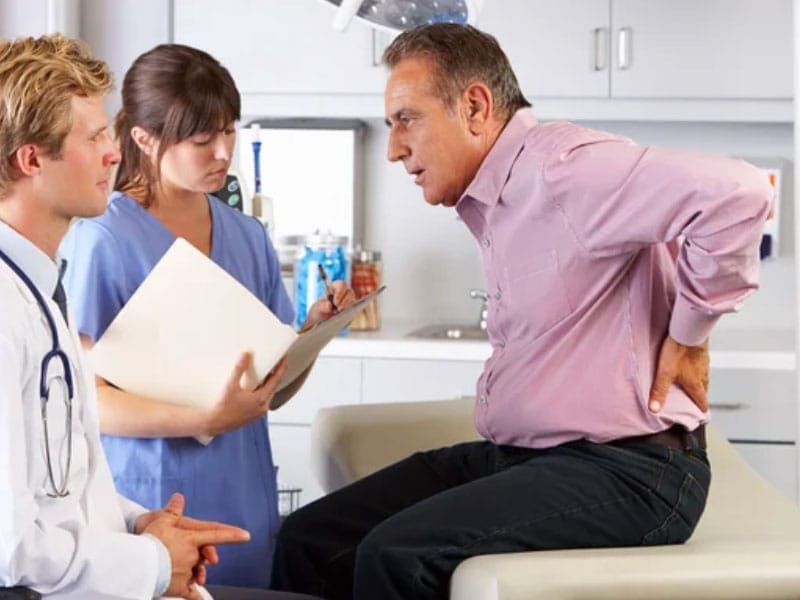
Identifying when immediate attention is required
If you experience severe, shooting pain in your back after a car accident, seek immediate medical attention.
Also, if you notice any numbness or tingling in your legs or arms following the accident, it’s important to see a doctor right away.
These symptoms could indicate nerve damage or a more serious injury that may not be immediately apparent.
It’s important to be aware of these delayed injury signs, as they can signal the need for further medical attention and treatment.
Ignoring these symptoms could lead to long-term complications, so it’s best to err on the side of caution and seek medical evaluation as soon as possible.
In addition to seeking immediate attention for severe pain and numbness, be mindful of any loss of bladder or bowel control as this may indicate a serious spinal injury.
Furthermore, if you have difficulty walking or standing after the accident, it’s crucial to consult with a healthcare professional promptly.
Long-term pain management
Long-term pain management after a car accident is crucial for promoting healing and improving quality of life.
This may include a combination of physical therapy, medication, and other pain management techniques.
Managing chronic pain requires a multi-faceted approach that addresses both the physical and emotional components of pain.
It’s important for individuals to work closely with their healthcare providers to develop a comprehensive long-term pain management plan that meets their individual needs.
Seeking ongoing medical care, adhering to prescribed treatments, and consistently practicing healthy habits are essential for managing chronic back pain effectively.
Engaging in regular exercise tailored to your condition, maintaining a balanced diet, and utilizing stress-reducing techniques can all contribute to long-term pain relief.
Additionally, participating in physical therapy sessions, monitoring any medication side effects closely, and communicating openly with healthcare providers can aid in the development of an effective pain management plan tailored to individual needs.
Moreover, exploring alternative therapies such as acupuncture or chiropractic care may offer additional relief for persistent back discomfort.
Building a strong support network within personal circles or through community resources can also provide emotional assistance during the journey toward long-term pain management.
Treatment Options for Back Pain After an Accident
If you’re experiencing back pain after a car accident, there are various treatment options available to help manage your discomfort and promote healing.
From pain management techniques to physical therapy, exploring these options can make a significant difference in your recovery journey.
Pain Management Techniques
Pain management techniques are essential for addressing back pain after a car accident.
Active strategies, including stretching exercises and physical therapy, can help to relieve discomfort and improve flexibility.
Additionally, using heat or ice packs may provide temporary relief from acute pain.
It’s important to consult with a medical professional to develop a personalized pain management plan tailored to your specific injury and recovery needs.
This might include prescription medications for short-term relief or long-term therapeutic treatments such as acupuncture or chiropractic care.
Epidural Steroid Injections
Epidural steroid injections, commonly referred to as ESIs, involve injecting a combination of local anesthetic and corticosteroid medication into the epidural space near the affected nerve roots in the spine.
This method delivers potent anti-inflammatory medicine directly to the source of pain, providing relief for conditions such as herniated discs or spinal stenosis.
ESIs can effectively reduce swelling and irritation around these nerves, helping alleviate pain and discomfort associated with back injuries sustained in car accidents.
Administered by qualified medical professionals like orthopedists or physiatrists, epidural steroid injections have been proven beneficial for individuals experiencing persistent lower back pain following a traumatic injury.
Physical Therapy
Physical therapy plays a crucial role in the recovery process after a car accident, particularly for back pain.
It focuses on restoring mobility, reducing pain, and improving overall function through exercises and manual techniques tailored to the individual’s specific injury.
A qualified physical therapist will work with patients to strengthen muscles, improve flexibility, and correct posture, helping to alleviate discomfort and prevent long-term issues such as degenerative spinal disorders or discogenic pain.
Furthermore, physical therapy can aid in preventing secondary complications from developing while promoting a faster return to normal activities.
By actively engaging in physical therapy sessions under the guidance of a professional therapist specializing in post-accident care, individuals can gradually regain strength and mobility necessary for daily life.
This proactive approach is essential in ensuring optimal healing following a back injury sustained from a car accident.
Conclusion
In conclusion, recognizing the signs of back pain after a car accident is crucial for seeking timely medical attention.
Seeking prompt medical care can lead to effective pain management and facilitate long-term recovery.
By understanding when to consult a doctor, individuals can take proactive steps toward addressing their back pain and preventing further complications.
Remember that early intervention plays a vital role in achieving the best outcomes following a car accident-related back injury.
Additionally, staying informed about treatment options and being proactive in seeking professional guidance are key elements in managing post-accident lower back pain.
FAQs
What are common back injuries from car accidents?
Common back injuries from car accidents include whiplash, spinal cord injury, herniation of spinal discs, lumbar sprains, and soft tissue injuries to tendons and muscles.
When should I see a doctor for back pain after an accident?
See a doctor immediately if you experience severe back pain, numbness, trouble moving any body part, or if the pain persists or worsens over time following an accident.
Can a car accident cause long-term back problems?
Yes, impacts such as blunt force can lead to chronic issues like degenerative disc disorder, facet disease, or spinal osteoarthritis if not properly diagnosed and treated early on.
Are there symptoms other than back pain to watch for after an accident?
After an accident be alert for additional symptoms such as cramping in the lower-back area or pelvic region including coccyx (tailbone), headaches that seem related to your neck or spine injuries like whiplash also note any changes in central nervous system functions which might suggest nerve tissue damage.
How are serious conditions like burst fractures treated?
Serious conditions like burst fractures typically require immediate medical attention; treatments can range from wearing a brace to stabilize the spine up to surgical intervention depending on severity and involvement of the nervous system.
Could physiotherapy help with my recovery post-accident?
Physiotherapy is often recommended after sustaining spine injuries in a car crash; it helps restore movement reduces low and upper-back pain strengthens surrounding muscles supporting injured tendons joints including those within rib cage hip bones even sacrum area.
